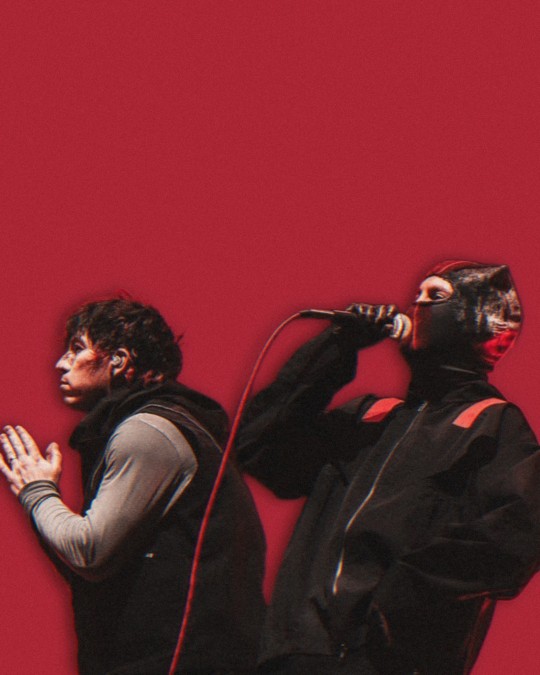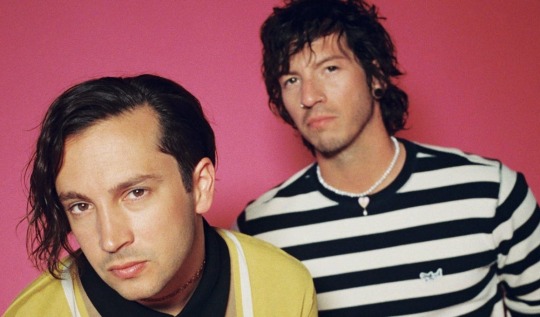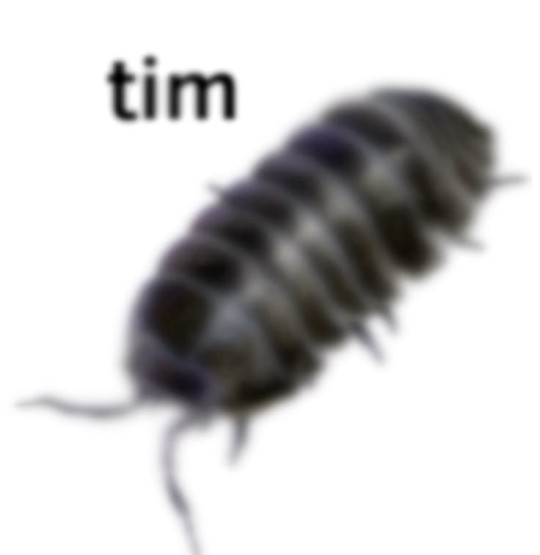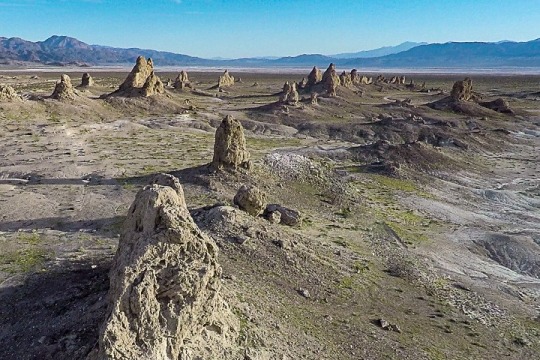#scaled and icy icons
Explore tagged Tumblr posts
Text
twenty one pilots fans!!! If you can hear me!!!! post your favorite pictures of the boys because I always need more and I'm curious 🤗
I'll go first!













#ive wanted to make this post for a while lol#as if the 3000 pics on pinterest and 900 i have in my photos isnt enough#twenty øne piløts#twenty one pilots clique#twenty one pilots#tyler and josh#josh dun#tyler joseph#clancy#blurryface#trench#vessel#tøp#scaled and icy#clancy era#skeleton clique#21 piløts#clikkie#clancy tour#21p#twentyonepilots#twenty one pilots fanart#twenty one pilots icons#i love twenty one pilots
224 notes
·
View notes
Text




Best fren icon pack #1! Feel free to use. :)
Credit isn't necessary but appreciated!
#twenty one pilots#tyler joseph#josh dun#clancy#torchbearer#clancy tour#twenty øne piløts#scaled and icy#topedit#tøp#icons#icon pack#joshler#skeleton clique#lavish#by holdingontoyoubandito#my edits#twenty one pilots edit#editors on tumblr#clique art
32 notes
·
View notes
Text
one thing I love about twenty one pilots albums is they always let Tyler get in at least one good scream before the end. It's his Enrichment I believe
#i say “let” like tyler didnt write the songs lol#also were counting the livestream version for scaled and icy bc 1) its iconic and 2) i can see how leaving one out of the main version#could have been a choice based on the vibes of the album#songs work different in a recording booth vs live yk?#but yeah tyler joseph scream singing beloved#twenty one pilots#tyler joseph#tøp
20 notes
·
View notes
Text
Oh Pink Haired Clancy from the live stream experience you’ll always be famous to me.

#finals are over… you know what that means.#the pink hair will always be iconic in my opinion and in my heart#twenty one pilots#twenty øne piløts#tøp#tyler joseph#tøp clique#skeleton clique#tumblr clique#clancy#scaled and icy#SAI#clancy tøp#tøp art#clique fanart#clique art
42 notes
·
View notes
Text










headers twenty one pilots new era
headers made by @.playeuth on twitter. all credits to @playeuth!
#twenty øne piløts#twenty one pilots headers#twenty one pilots icons#twenty one pilots#tyler joseph#21p#scaled and icy#tyler joseph icons#tyler headers#tylericons#icon josh dun#josh dun icon#josh dun icons#twenty one pilots wallpaper#twenty one pilots clique#twentyonepilotswallpapers#twentyonepilotsheaders
66 notes
·
View notes
Text









#tyler joseph#tyler joseph icons#icons tyler joseph#tyler icons#icons#male icons#male icon#twitter stuff#twitter icons#boys#boys icons#twenty one pilots#twenty one pilots icons#blurryface#trench#vessel#scaled and icy#tøp#tøp icons#heathens#ride#tear in my heart#shy away#my blood
75 notes
·
View notes
Text
#not including self titled or rab cause I don’t think they had the same iconic wardrobes#twenty one pilots#blurryface#trench twenty one pilots#sai#scaled and icy#clancy album#tyler joseph#josh dun
24 notes
·
View notes
Text
I know it’s a little late but in honor of Scaled and Icy’s birthday, let’s not forget that she managed to give us both Tyler’s worst hairstyle and his best.


#Pink!Tyler you’ll always be iconic to me#honerable mention goes to BleachedTips!Tyler#also brought to you by SAI#SAI my dear they never appreciated you enough#scaled and icy#SAI#twenty øne piløts#twenty one pilots#top
5 notes
·
View notes
Text
"I'm on the outside in the summer heat"
- twenty one pilots
#aesthetic#girlblogging#hollywood#twenty one pilots#twenty øne piløts#summer#heat#scaled and icy#music#songs#tunes#good music#tyler joseph#josh dun#album#iconic#icons#lyrics#lyric quotes#21 piløts#21 pilots#quotes#beautiful quote#so hot 🔥🔥🔥#tumblog#song
7 notes
·
View notes
Text

…but on Saturday, Saturday, Saturday… we paint the town!
✨✨✨✨✨✨✨✨✨✨✨✨✨✨✨✨✨
(I didn’t change the colour in these pictures cause we all agree [I HOPE!!!] that Tyler looks fucking iconic in pink hair 🩷) Today’s countdown is very special cause if you didn’t know… IT’S SATURDAY! So put on your dancing shoes and stream Saturday The Song and Scaled & Icy The Album for your and our well being! 🩷🩵💛 Happy Saturday, everyone! 🕺
24 DAYS til we see boys on stage! ✨
@pardonmydelays 🩷

#togg & jog on tour#poppy & bel#tyler & josh#twenty one pilots#tyler joseph#josh dun#clancy world tour#HAPPY SATURDAY EVERYONE#stream scaled and icy#stream saturday
22 notes
·
View notes
Note
Hi! This is probably very much out of nowhere but I saw a post you made about a year ago about Night Furies being equiped to hunt other dragons. I absolutely understand if you don't want to but I would love to hear your opinion on Wolly Howls. There are two very different designs of it, one in School of Dragons (where it's kind of a Night Fury reskin but stil unique) and one in Rise of Berk, and I would love to hear your take on either one <3
ooooof imma be honest I never really gave that much thought to any of the HTTYD dragons aside from the night and light fury (and the stormcutter where it's just my headcanon that they all have primarily brown bodies and just their head crests are all sorts of colors)
skimmed through the wiki rn and I've got a few thoughts tho
firstly, imo it's a bit silly for the wooly howl to summon snowstorms imo. with the mostly science-based approach of httyd, it's a little world-breaking for me cause snowstorms are dependent on temperature, atmospheric pressure, the water cycle, wind speed etc etc, and one single dragon just isn't gonna influence all of that. the skrill is another strongly weather-associated dragon and not even skrills can summon thunderstorms.
the wiki mentions wooly howls are bulkier than most strike class dragons, and with their icy habitat and resemblance to the night fury it makes me think they could potentially have a similar hunting strategy to the gyrfalcon as opposed to the night fury's falcon - gyrfalcons chase prey down on the horizontal plane rather than diving and pin it on the ground with their weight. their iconic "fluffy" scales also make me think they might have fuzzy wings and silent flight like an owl.
I don't think they would hunt other dragons, once again following the gyrfalcon template, but rather deer, horses, cattle, wolves and other large mammals. fish could be a possibility too but probably not frequent.
according to the wiki they shoot highly accurate ice blasts from great distance which consist mostly of hail. that's a little odd to me tbh, from close-up i would say high accuracy is reasonable but with increasing distance the hailstones would just scatter. besides, a dragon that is already a fast flyer would probably not need the ability to snipe things from afar.
all of this makes me think their way of hunting could be to wait in camouflage on the ground until prey arrives, give chase while flying low above the ground, maybe shoot it with the ice blast to make it trip and then pin it down with its body weight
idk
9 notes
·
View notes
Text
Bug - writing archive
I've never used tumblr before (cancel me, tumblr is honestly iconic and I wish I was there for it), but I lowkey ran out of space in my Google docs 😭🙏
Maybe I'll post recent writings if I get my spark back, but for now I'll just leave my old ones lol.
Tldr; I've improved since writing this and whatnot so if you do end up reading this pls be nice im a child. :3

Beetles. Violet shells, vibrating wings, and rhinoceros noses that point like the beak of a seagull are only a few of all attributed to their respective kind. As I tended for my beetle more, tediously caring for him on my shoulder, I noticed he had grown another set of wings. He had grown, another raise in his back, another acknowledgement of his great success for such a small bug. I promised myself I'd give it a fair shot at the life it was capable of living on such a small scale. I had cultivated him, leaving the soil fertilized for the beetles that were yet to be found. Of course my beetle was not a crop nor cattle, but the more I treated it like an embryo waiting to hatch, the more eager I became for attending its needs. While I grew deeply excited for what was yet to come, my beetle had begun to stand out. A little rise of bumps on his back wings not ready for the exposure of icy air had sprouted. This was only the beginning of his odd ‘quirks’ to say the least. Everyone else's beetle seemed to spare, while mine preferred dipping its horn into plaster. It would encase itself and sleep before crawling out as if to mimic and envy the dune bugs. They were always stronger, more presentable. My beetle preferred to sap up at the ink spots it found scurrying on the classroom desks and write poses. My predatory bug that was supposed to fight mighty was scrawny and its putridity filled my senses. Instead of sparing, it spared the decision to conflict with the other beetles. It would always hide with the lightning bugs, but it had no spark. No luminescent glow radiated from its hind, for it was a beetle. Not particularly one of a kind. I set him out every morning and night to offer him opportunities to fly. Yet, when I'd look on my shoulder, there he would be, mimicking the crawling of worms. He was not squirmy and loose, fitting the soil that seethed from the Earth, for of course, he'd always been a Beetle. Nothing more and nothing less. He learned to be content with his life as a coleoptera. He practiced his battling and he flew a little harder. Eventually, I stopped condemning his out of place—out of system behavior. My hard training and teaching paid off at some point. He crawled with not other critters but of his own specimens. I prided myself on such an accomplishment. The little black bug learned to be a beetle. To my knowledge, anyway. The beetle had been crawling away, deep into the night, painting its violet shell tortoise colored. He now wanted to be a cockroach. This greatly disappointed me, or rather would have. When day would arise, I had no suspicions entirely. When night fell, I was sure of myself and deemed it a success. This arrogance grew him the room for his freedom. All was well until the dawn I went to pick up the little black beetle on my shoulder, only to be found with his carcass, among others. I quickly brushed them off, and in my rampant disgust I failed to see the message he'd been trying to whisper. He had in fact not been a beetle at all.
#writing#creative writing#writeblr#writing community#writers#writerscommunity#contemporary fiction#symbolism#bugs#insects#beetles#prose#words words words#poetic
8 notes
·
View notes
Text
Balladeer: The Melodic Steeds of Howa’ah
The Balladeer is a majestic, snow-white creature unique to Howa’ah, blending the grace of a deer, the power of an elk, the agility of an antelope, and the climbing prowess of an ibex. These swift and hardy beasts thrive in the Frozen Kingdom’s eternal winter, serving as the primary mounts and companions for its people. Their telepathic voices and air magic elevate them beyond mere beasts—they are partners in survival and song, filling a vital niche in Eryndara’s horse-less world.
Species Name: Balladeer
Scientific Name: Cervidraconis cantatrix
Classification: Mammalian hybrid (elk, deer, antelope, ibex traits)
Elemental Affinity: Wind magic
Habitat: Exclusively Howa’ah—icy fjords, snowbound plains, and rugged cliffs
Cultural Role: Sacred mounts, resource providers, and cultural icons of resilience.
Males: They are called Balladeer Bucks.
Females: They are called Balladeer Does!
Physical Description:
Size: Comparable to the largest elk—up to 5.5 ft (1.7 m) at the shoulder, 10 ft (3 m) in length, weighing 800–1,300 lbs (360–590 kg), with males slightly larger than females.
Coloration: Snow-white fur with a sleek, smooth coat that repels ice and reflects Howa’ah’s pale light, blending seamlessly with the snow.
Horns: Both males and females bear ibex-style horns—curved, ridged, and permanent—though female horns are slightly smaller (2–3 ft vs. 3–4 ft for males). These lightweight, durable horns aid in defense and climbing.
Eyes: Gentle, wise, patient blue eyes that gleam like glaciers, radiating a serene depth that mirrors Howa’ah’s icy soul. These luminous orbs seem to hold centuries of quiet understanding, enhancing their ethereal presence.
Neck: Thick and muscular, built for rutting and head-butting, with dense fur and reinforced bone structure to withstand powerful collisions. This robust neck supports their horns during dominance displays and aids in breaking ice or pushing through snowdrifts.
Tail: Short and compact, measuring 6–8 inches (15–20 cm), covered in dense, snow-white fur with a slight taper. The brevity enhances their streamlined form, minimizing exposure to Howa’ah’s biting winds while maintaining balance during leaps.
Muzzle: Resembles a red elk’s, broad and slightly squared, with soft, velvety, dexterous lips that are rounded and perfect for tough gripping and pulling. These lips allow precise foraging, stripping frozen grasses or tugging resilient lichens from icebound cliffs with ease.
Build: Muscular yet lithe, with long legs for leaping and cloven hooves—split into two sturdy, broad toes—for gripping icy cliffs and traversing snowbound terrain. These hooves provide balance and traction, perfectly suited to their agile, climbing nature.
Life Cycle:
Fawns: Born in spring litters of 1–2, standing within hours. Fur is fluffy and faintly luminescent, fading to smooth white by adolescence.
Adults: Reach maturity at 5 years, living 20–30 years. Horns fully develop by adulthood, and air magic strengthens with age.
Elders: Rare individuals over 25 years grow silvery streaks in their fur and project deeper telepathic voices, often leading herds.
Abilities
Wind Magic: Balladeers wield wind magic to enhance their speed (up to 50 mph/80 km/h in sprints) and leaping ability, soaring up to 30 ft (9 m) across chasms or cliffs. They can lighten their bodies to scale near-vertical ice walls, a trait tied to Howa’ah’s latent magical currents.
Telepathy: Communicate telepathically with their riders, projecting melodic, resonant voices like wind chimes or distant flutes. This bond requires trust and proximity, deepening over time.
Endurance: Adapted to Howa’ah’s frigid climate, they maintain warmth through thick fur and a high metabolism, running or climbing for hours without tiring.
Physical Prowess: Exceptional climbers and leapers, they navigate Howa’ah’s icy fjords and peaks with ease, using horns and claws to anchor against blizzards.
Behavior
Temperament: Gentle yet fiercely protective, Balladeers form lifelong bonds with riders or herd mates. Domesticated Balladeers are extremely loyal to their owners/riders, rarely abandoning them in trying times—some have even fought off solitary Black-Backed Wolf Drakes with head-butts and horn thrusts to protect their companions. Their glacier-blue eyes convey a patient wisdom, calming those around them, though they remain cautious around strangers until trust is earned. During rutting season, their thick necks and horns come into play as males (and occasionally females) clash in displays of strength, their short tails flicking with agitation.
Social Structure: Live in small herds (5–15 individuals), led by an elder doe or stag. Telepathic songs coordinate movements and warn of threats like frost beasts or avalanches, often punctuated by a steady, reassuring look from their luminous eyes. Rutting battles, marked by resonant head-butts, establish hierarchy within the herd, though domesticated individuals redirect this strength to their riders’ defense or sleigh duties.
Diet: Herbivorous, grazing on hardy snow mosses, lichens, and frozen grasses unearthed by their cloven hooves and gripped firmly with their soft, velvety lips. These dexterous lips pull resilient Winterberries or tough roots from icebound cliffs, supplementing their diet with mineral-rich ice licked from the rock.
Defensive Strategy: When attacked by bandits, Balladeers exhibit remarkable cunning. If their rider dismounts or falls, they act as if the rider remains on their back—maintaining a steady gait and posture—luring bandits away from the vulnerable individual. With their glacier-blue eyes gleaming in the snow, they lead pursuers back toward towns or homesteads, where bandits face Howa’ah’s defenders, leveraging their speed and wind magic to outpace danger until help arrives. Their thick necks also allow them to fend off attackers like Black-Backed Wolf Drakes with forceful head-butts if cornered, their loyalty shining through in such acts.
Sleigh Work: Domesticated Balladeers can be hooked to sleighs in teams of seven, with the seventh typically leading the pulling effort. Harnessed with PrimPine leather and bone fittings, their wind magic lightens the load, and their thick necks provide the power to haul goods or people across Howa’ah’s snowbound plains, their short tails flicking in rhythm with their strides.
Habitat
Balladeers roam Howa’ah’s snowbound plains, icy fjords, and jagged cliffs, thriving in the eternal winter where other species falter. Their air magic allows them to reach high plateaus inaccessible to predators, and their white coats blend with the snowscape. They avoid the Frostveil Sea’s edges, favoring inland heights where their climbing skills excel.
Cultural and Ecological Role
In Howa’ah Culture:
Sacred Mounts: Balladeers emerged as the Frozen Kingdom’s primary beasts of burden and transport after the dragons’ exodus to Virelith 300 years ago. Riders—often descendants of berserker-gene warriors—bond with them telepathically, forming partnerships celebrated in oral traditions and carvings.
Resources: Provide meat (rich and lean), milk (sweet, high-fat, used for cheese and warmth), hides (soft yet insulating), and horns (carved into tools or flutes). Their slaughter is a solemn ritual, honoring their sacrifice with songs of gratitude.
Symbolism: Known as “Singers of the Frost,” their telepathic ballads soothe Howa’ah’s peaceful utopia, calming latent berserkers and inspiring unity. The Ballad of the White Wind festival marks their migrations with communal singing under Lunara’s light.
Foods Produced by the Balladeer
Balladeer Venison
Production: Harvested from Wild Balladeer after a ritual slaughter, typically performed by Howa’ah’s frosthunters during late winter when herds naturally thin. The meat is carefully butchered with bone knives to honor the animal’s spirit, then either roasted fresh over PrimPine fires or preserved for leaner months. The process begins with a telepathic farewell from the rider, ensuring the Balladeer’s consent—a sacred tradition rooted in their bond.
Physical Characteristics:
Appearance: Deep red with a fine grain, lean yet marbled with thin streaks of white fat, reflecting the Balladeer’s active life. Cuts range from thick haunches to tender loins, often glistening with a faint icy sheen from the cold.
Texture: Firm and slightly chewy when raw, tenderizing beautifully when slow-cooked or roasted, retaining a juicy bite.
Flavor: Rich and robust, with a subtle gaminess tempered by the Balladeer’s diet of snow mosses and lichens. Notes of earthy sweetness emerge from Winterberry grazing, complemented by a faint mineral tang from cliffside ice.
Cultural Role: A staple protein in Howa’ah’s diet, Balladeer Venison is the centerpiece of communal feasts like the Ballad of the White Wind, roasted whole and shared to honor the herd’s sacrifice. It’s prized by frosthunters like Cara for its sustaining warmth in the eternal cold.
Balladeer Jerky
Production: Crafted from Balladeer Venison strips, seasoned with crushed Winterberries, salt from the Frostveil Sea, and dried PrimPine needles for a smoky edge. The meat is air-dried using the Balladeer’s own air magic—riders coax the herd to channel gentle winds over racks, dehydrating the strips in subzero temperatures over 2–3 weeks. This preserves the meat without fire, maintaining its magical essence.
Physical Characteristics:
Appearance: Dark reddish-brown, shriveled into tough, sinewy strips roughly 6–8 inches long, with a faint silvery dust from salt and frost.
Texture: Chewy and fibrous, requiring effort to tear but softening with prolonged chewing, releasing stored flavors.
Flavor: Intensely savory with a sharp, salty bite, balanced by a sweet-tart Winterberry undertone and a smoky PrimPine finish. The air magic drying process infuses a crisp, clean aftertaste, hinting at Howa’ah’s winds.
Cultural Role: Balladeer Jerky is a portable staple for Howa’ah’s nomadic riders and travelers like Eirik, offering long-lasting sustenance during blizzards or hunts. It’s traded as a durable good, valued for its lightweight energy in a land where fresh food is scarce.
Balladeer Sausages
Production: Made from ground Balladeer Venison (often trimmings from the haunch and shoulder), blended with fat scraps and spiced with ground Frostveil kelp, Winterberry seeds, and PrimPine resin for binding. The mixture is stuffed into cleaned Balladeer intestines, twisted into 4–6-inch links, and smoked over low PrimPine fires for 1–2 days. Some are hung in snow caches to cure further, intensifying flavor.
Physical Characteristics:
Appearance: Ruddy brown with a glossy, taut casing, speckled with green kelp flecks and amber resin dots. Smoked varieties darken to a near-black sheen.
Texture: Firm yet juicy, snapping cleanly when bitten, with a slight chewiness from the lean meat and a slick fat coating.
Flavor: Bold and hearty, with a salty kelp tang, a peppery Winterberry kick, and a resinous, piney depth. Smoking adds a robust smokiness that lingers, warming the palate in Howa’ah’s chill.
Cultural Role: Balladeer Sausages are a frosthunter’s comfort food, grilled over campfires or boiled in stews to feed families or warbands. They’re a festive treat during winter gatherings, symbolizing unity, and a practical ration for riders patrolling Howa’ah’s icy borders.
Balladeer Milk and Cheese
Balladeer Milk:
Production: Harvested from female Balladeers by skilled herders who use telepathic bonds to calm the does during milking. Collected in insulated hide pouches, the milk is strained through PrimPine bark filters to remove ice flecks, then stored in snow caches or consumed fresh.
Physical Characteristics: Thick and creamy, opaque white with a faint golden shimmer from high fat content, resisting freezing even in Howa’ah’s subzero cold.
Flavor: Rich and robust, with a sweet, buttery warmth contrasting the thinner FrostBison Milk. A subtle earthy note from snow mosses adds depth.
Cultural Role: A rare delicacy, Balladeer Milk is sipped warm during festivals or shared among herders as a reward for tending the herd. It sustains frosthunters like Cara on long treks, offering comfort in the eternal winter.
Balladeer Cheese:
Production: Milk is gently heated over PrimPine embers, curdled with frost elk rennet or PrimPine sap acids, and pressed into small, dense molds. Aged 3–6 months in cool, dry PrimPine hollows or snow caches, yielding creamy, thick wheels (0.5–2 lbs). Lightly salted to enhance flavor without hardening excessively.
Physical Characteristics:
Appearance: Soft golden hue, smooth and glossy with a pliable, thick texture—no rind, just a natural sheen from fat.
Texture: Dense yet spreadable, melting luxuriously when warmed, thick enough to scoop with bread or hides.
Flavor: Creamy and robust, with a bold, earthy tang, a nutty undertone from Winterberry grazing, and a lingering richness that mellows with age.
Cultural Role: Balladeer Cheese is a prized treat, reserved for special occasions like the birth of a fawn or a rider’s bonding ceremony. It’s savored by Howa’ah’s elite or traded to outsiders, adding richness to a frosthunter’s sparse diet.
Cultural and Ecological Context
Resource Significance: In Howa’ah’s 300-year winter, Balladeer foods are a lifeline. Venison, jerky, and sausages provide protein and energy, while milk and cheese offer fat and warmth—crucial for a people without external livestock. Their production reflects Howa’ah’s resourcefulness, using native plants (Winterberries, PrimPine) and magical traits (air drying) to maximize sustenance.
#w0e's at it again#w0e's musings#creative writing#headcanons#writing#species: Balladeer of Howa'ah the cunning steed!#Would you ride a Balladeer?
7 notes
·
View notes
Text

Manifest the ceiling when you shy away ~
This was one of my first pieces for the Scaled and icy era :]
I should get started in post all my clique art here, not sure yet if I'll post *all* of my art here, probably the most iconic ones for now, we'll see :)
If you want to see more of my most recent art you can just follow me there:
Instagram: https://instagram.com/alienboijishua?igshid=NTc4MTIwNjQ2YQ==
Twitter: https://twitter.com/alienboijishua?s=21&t=MO7eEWZj6GMBbedb_ZqGDg
#artists on tumblr#clique art#clique artist#twenty one pilots#tøp#tøp art#scaled and icy#digital art#my art#my artwok#fanart#artist#artwork#art
59 notes
·
View notes
Text


A Network of Dried Lakes
At Searles Lake, water levels—and the compositions of brines—have varied dramatically throughout the Pleistocene due to the region’s topography and the availability of water. The lake lies in a closed basin in the Mojave Desert in southeastern California, along with four other lakes fed by the Owens River. The river’s flow has fluctuated sharply due to climate, tectonic, and volcanic changes.
Searles Lake and the adjacent playas in several nearby valleys are visible in the satellite images above. Though Searles is generally dry, the images were captured on February 11, 2024, after water had pooled on the playa following unusually wet weather.
In the natural-color image (TOP), Searles Lake appears green, and snow is white. In the false-color image (bands 7-2-1) below it, it is easier to distinguish between water and land. Snow appears light blue, water is dark blue, and areas with vegetation are green. Some of the water on the playa may also be the result of brine pumped to the surface during mining processes. Both images were acquired by the MODIS (Moderate Resolution Imaging Spectroradiometer) on NASA’s Terra satellite.

During high-flow periods on the Owens River, Owens Lake would spill into China Lake, then Searles Lake. Searles would overflow into Panamint Lake, then into Lake Manly in Death Valley. Water levels at Searles sometimes rose as high as 700 feet (200 meters) above the current basin floor. When the flow of the river slowed, Searles Lake dried, encouraging the large-scale formation of evaporites—sedimentary deposits of salts produced by the evaporation of water.
The Owens River provided another key ingredient for the formation of evaporites at Searles Lake—an unusually rich array of dissolved minerals. Weathering of volcanic rocks in Owens Valley and the Long Valley Caldera, a depression left by a massive volcanic explosion, was a key source of these mineral solutes. Geothermal springs rich in ions of sodium, potassium, bicarbonate, and calcium carbonate in the caldera flow into Owens River.
The Operational Land Imager (OLI-2) on Landsat 9 captured the image of Long Valley Caldera shown above on April 8, 2024. The lower-elevation caldera appears brown while the higher-elevation hills surrounding it are capped with snow. The Owens River flows southeast from Lake Crowley, a reservoir created by damming the river in 1941.

Though the properties of the evaporite minerals found on asteroid Bennu make clear that they formed in liquid water, the volume of that water is less well understood. “The water on Bennu’s parent body may have been in quite small pockets, perhaps a meter thick, surrounded by wet, drying mud,” said Tim McCoy, curator of meteorites at the Smithsonian’s National Museum of Natural History and coauthor of a new report about the evaporites found on Bennu published in Nature.
“We know Bennu’s parent body did not have surface lakes or rivers like you see at Searles Lake,” said Hannah Kaplan, a planetary geologist at NASA’s Goddard Space Flight Center. “The water on Bennu’s ancestor likely percolated through the subsurface, between the pores of rocks and through small fractures in hydrothermal systems.” Supporting that idea, images of Bennu obtained by OSIRIS-REx show carbonate veins ranging from 3 to 15 centimeters (1 to 6 inches) on some boulders. The image above shows one of these veins.
Clues to the nature of this ancient water might be found on the dwarf planet Ceres, where spacecraft have observed similar evaporite minerals on the surface, and on Enceladus, an icy moon of Saturn that emits plumes of water containing sodium salts, McCoy added.
The Trona Pinnacles

When water levels were high at Searles Lake, the lake produced iconic evaporite formations—tall spires of calcium carbonate (tufa) known as the Trona Pinnacles. The spires, shown above, vary in size and shape, with some rising as high as 140 feet (40 meters).
The spires formed over long periods when Searles Lake had high water levels and hot spring water bubbled up, mixed with alkaline waters, and interacted with communities of algae. The otherworldly features have appeared in movies and shows such as Star Trek V, Lost in Space, Planet of the Apes, and Battlestar Galactica.
“The pinnacles look incredible and are made from calcium carbonate, a mineral we found on Bennu,” said McCoy. “But they’re different in many ways,” cautioned Alfonso Davila, an exobiologist at NASA’s Ames Research Center, noting that the samples on Bennu were tiny flakes, not large-scale deposits like those at Searles Lake.
Mysteries Remain

Mars, the dwarf planet Ceres, and Saturn’s moon Titan are other celestial bodies where scientists have discovered large-scale evaporite deposits on the surface, Davila noted. The image above shows a sodium carbonate deposit on Ceres, likely the product of brine spilling across the crater after a meteorite punched a hole into the icy crust.
“Searles Lake offers important clues, but remember that the journey that evaporite minerals on Bennu, Ceres, or Enceladus have gone through was likely quite different in some ways than those at Searles,” Davila said. Earth has an atmosphere, life, liquid oceans, and warm temperatures. “We can’t say all the same things about Bennu.”
NASA Earth Observatory images by Lauren Dauphin, using Landsat data from the U.S. Geological Survey and MODIS data from NASA EOSDIS LANCE and GIBS/Worldview. Bennu OSIRIS-REx photo originally published in Kaplan, et al. courtesy of Hannah Kaplan. Ceres image of Occator Crater from the Dawn mission and courtesy of the NASA Scientific Visualization Studio. Trona Pinnacles photo by Bob Wick for the California Bureau of Land Management. Story by Adam Voiland.
3 notes
·
View notes
Text

header twenty one pilots
like/reblog if you use!
#twenty øne piløts#twenty one pilots headers#twenty one pilots icons#twenty one pilots#tyler joseph#tyler joseph icons#tyler headers#tylericons#headers twenty one pilots#twenty one pilots wallpaper#twenty one pilots clique#josh headers#headers josh#josh icons#scaled and icy
35 notes
·
View notes